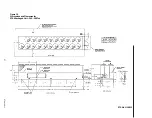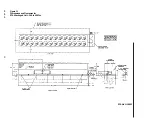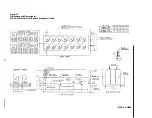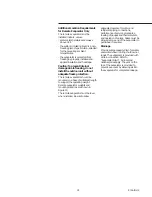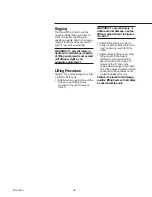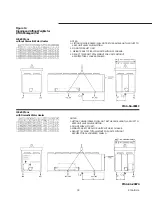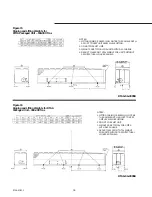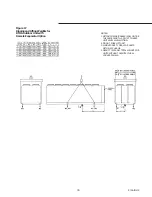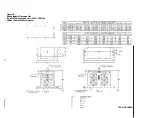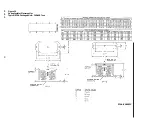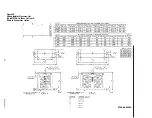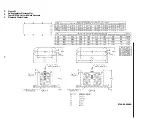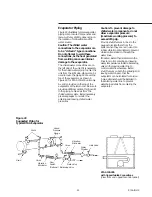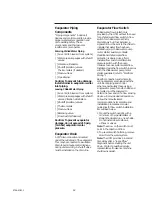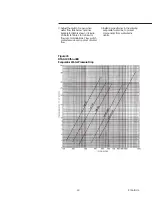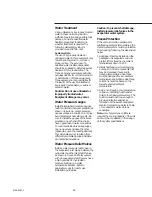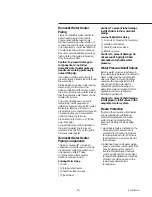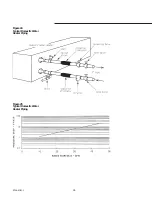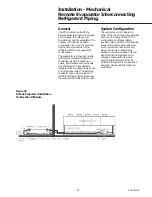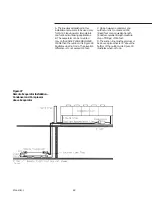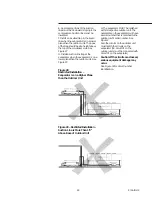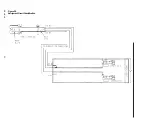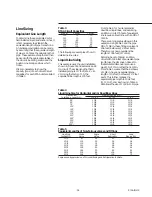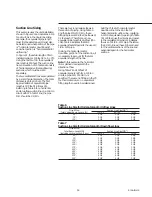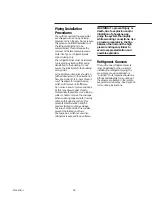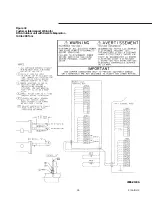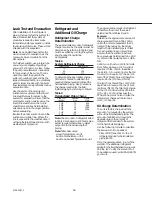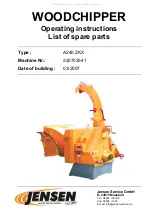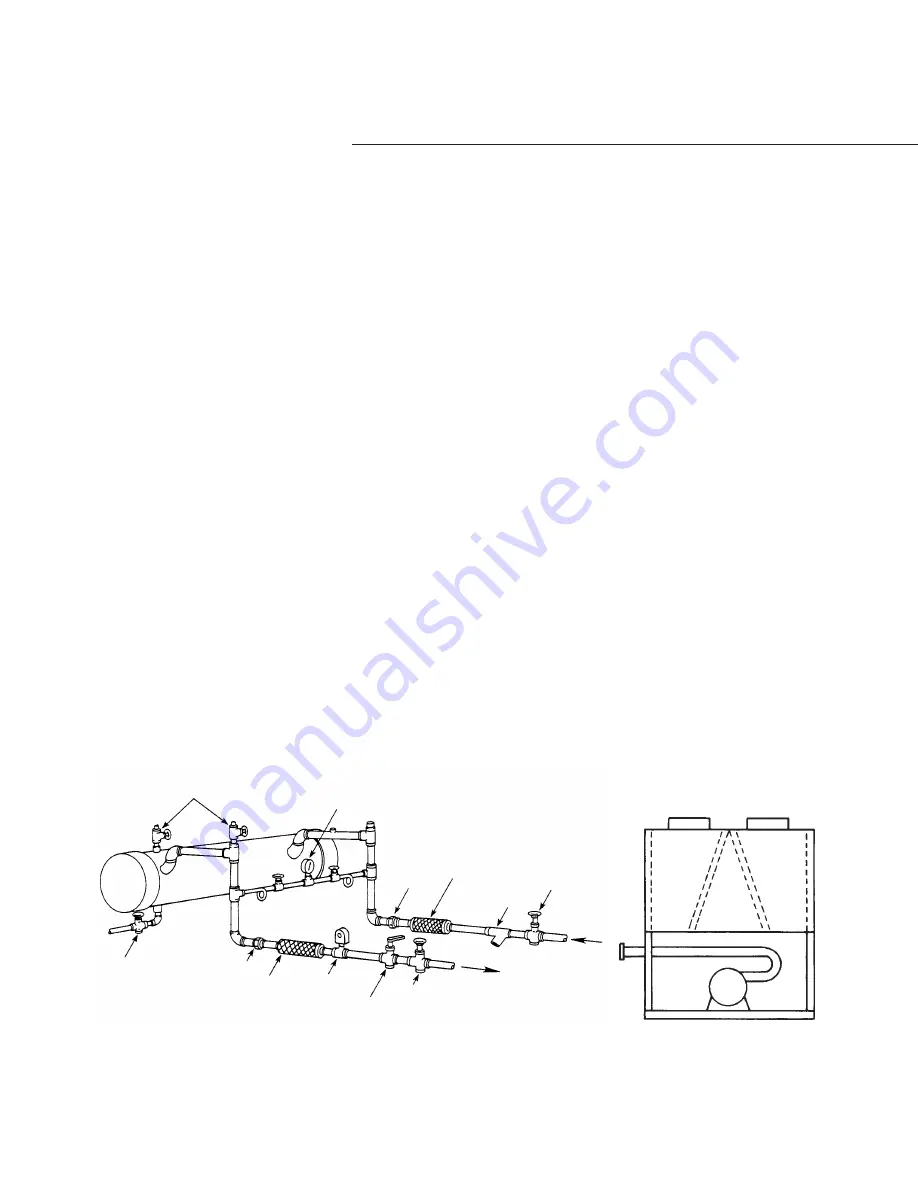
41
RTAA-IOM-3
Evaporator Piping
Figure 22 illustrates typical evaporator
piping components. Components and
layout will vary slightly, depending on
the location of connections and the
water source.
Caution: The chilled water
connections to the evaporator are
to be “victaulic” type connections.
Do not attempt to weld these
connections, as the heat generated
from welding can cause internal
damage to the evaporator.
The chilled water connections are on
the left side of the unit. If it is necessary
for the chilled water piping to enter the
unit from the right side, elbows can be
used to route the piping 1800 over the
top of the evaporator, as shown in
Figure 22, for RTAA 130-200 units only.
A vent is provided on the top of the
evaporator at the return end. Be sure to
provide additional vents at high points
in the piping to bleed air from the
chilled water system. Install necessary
pressure gauges to monitor the
entering and leaving chilled water
pressures.
Caution: To prevent damage to
chilled water components, do not
allow evaporator pressure
(maximum working pressure) to
exceed 215 psig.
Provide shutoff valves in lines to the
gauges to isolate them from the
system when they are not in use. Use
rubber vibration eliminators to prevent
vibration transmission through the
water lines.
If desired, install thermometers in the
lines to monitor entering and leaving
water temperatures. Install a balancing
valve in the leaving water line to
control water flow balance. Install
shutoff valves on both the entering and
leaving water lines so that the
evaporator can be isolated for service.
A pipe strainer should be installed in
the entering water line to prevent
waterborne debris from entering the
evaporator.
Figure 22
Suggested Piping for
Typical RTAA Evaporator
Vents
Valved
Pressure
Gauge
Drain
Union
Vibration
Eliminator
Flow
Switch
(Optional) Balancing Valve
Gate Valve
Union
Water
Strainer
Vibration
Eliminator
Gate Valve
RTAA 130-200
with Opposite-Side Connections
(View from end opposite control panel)
Summary of Contents for RTAA-130
Page 2: ... American Standard Inc 1991 ...
Page 8: ...8 RTAA IOM 3 ...
Page 24: ...24 RTAA IOM 3 ...
Page 50: ...50 RTAA IOM 3 Figure 30 Refrigerant Circuit Identification ...
Page 52: ...52 RTAA IOM 3 Figure 31 Remote Evaporator Piping Example ...
Page 59: ...59 RTAA IOM 3 Continued from Previous Page See Notes on Next Page ...
Page 63: ...63 RTAA IOM 3 Continued from Previous Page See Notes on Page 61 ...
Page 65: ...65 RTAA IOM 3 Continued from Previous Page See Notes on Page 61 ...
Page 76: ...76 RTAA IOM 3 ...
Page 92: ...92 RTAA IOM 3 Figure 51 Operator Interface Controls ...
Page 120: ...120 RTAA IOM 3 ...
Page 127: ...127 RTAA IOM 3 Continued from Previous Page 2307 1566C ...
Page 128: ...128 RTAA IOM 3 Figure 57 Unit Sequence of Operation RTAA 130 to 200 Tons 2306 9122A ...
Page 132: ...132 RTAA IOM 3 Figure 58 Operator s Log ...
Page 138: ...138 RTAA IOM 3 ...

